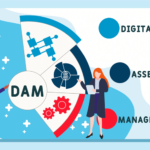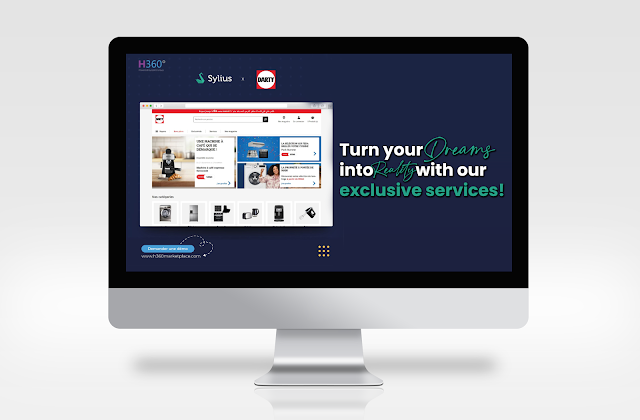Digital Asset Management (DAM): Streamlining Marketing Operations
Digital Asset Management (DAM) has emerged as an essential marketing technology for global organizations, enabling them to streamline their marketing and commerce operations. Alongside DAM, Product Information Management (PIM) plays a crucial role in managing product data. While these two software solutions share some similarities, it is important to understand that they serve distinct purposes and are not interchangeable.
In this article, we will delve into the features and benefits of DAM, explore the concept of PIM, and discuss how these two solutions can work together to enhance marketing efforts. By the end, you will have a comprehensive understanding of how DAM can revolutionize your marketing operations.

What is DAM?
Digital Asset Management (DAM) is a system that enables organizations to store, retrieve, and distribute their digital assets and media files, including text, graphics, images, videos, and audio. Initially, DAM served as a standalone media library, but it has evolved into a multifunctional tool that facilitates collaboration, brand management, compliance, and the creation of powerful omnichannel experiences.
DAM acts as a central repository, often referred to as a “Single Source of Truth,” for all your digital assets and rich media. This includes photos, videos, 3D models, banners, and more. It allows different teams, departments, brands, or external users to access up-to-date marketing resources and brand-approved templates for various activities such as marketing, advertising, social media, and e-commerce. DAM achieves this through metadata management, taxonomy management, and artificial intelligence capabilities, making it easy to organize, search, download, and share assets both internally and externally.
Moreover, DAM offers upstream workflow capabilities for content creation, editing, and approval, as well as downstream capabilities and CDN integration for content localization, optimization, and distribution across different devices, channels, and audiences. By integrating DAM with your MarTech stack and IT infrastructure, you can personalize assets on the fly and continuously improve content usage and performance based on specific countries, products, or contexts. This streamlines your marketing efforts and benefits not only your global and local marketing teams but also sales teams, creatives, and product teams.
The Features and Benefits of a DAM System
A DAM system offers a range of features and benefits that empower organizations to efficiently manage their digital assets and enhance their marketing efforts. Let’s explore some of the key features and benefits of implementing a DAM system:
Centralized Repository for Digital Assets
A DAM system provides a centralized repository, often referred to as a “Single Source of Truth,” for all your digital assets and rich media. It acts as a secure and organized hub where you can store and manage assets such as photos, videos, 3D models, and more. This eliminates the need for scattered file storage and ensures that everyone has access to the most up-to-date assets.
Easy Retrieval and Distribution of Assets
With a DAM system, retrieving and distributing assets becomes a breeze. Users can quickly search for assets using metadata, keywords, or other criteria, saving valuable time and effort. This ensures that the right assets are readily available to different teams, departments, or external partners who need them for marketing, advertising, social media, or e-commerce activities.
Collaboration and Brand Management
DAM facilitates collaboration among teams and departments by providing a centralized platform where they can work together on assets. It enables version control, annotations, and comments, ensuring smooth collaboration and efficient asset creation processes. Furthermore, DAM helps maintain brand consistency by enforcing brand guidelines, ensuring that all assets are brand-approved, and preventing unauthorized use of assets.
Enhanced Omnichannel Experiences
DAM enables organizations to create powerful omnichannel experiences by providing the necessary assets for different channels and devices. It allows you to optimize and distribute content across multiple channels, ensuring a consistent brand experience for customers regardless of the touchpoint. This, in turn, enhances customer engagement and drives better business results.
Improved Asset Organization and Searchability
One of the key strengths of DAM is its ability to organize assets effectively. With metadata and taxonomy management features, users can assign relevant information to assets, making them easy to categorize, search, and retrieve. This eliminates the time-consuming process of manually searching for assets, increasing productivity and efficiency.
Upstream Workflow Capabilities
DAM systems often come equipped with upstream workflow capabilities, enabling streamlined content creation, editing, and approval processes. This allows teams to collaborate seamlessly on asset production, ensuring that content is created and approved efficiently before being distributed. By automating these processes, DAM saves time and reduces potential bottlenecks in content production.
Downstream Capabilities and CDN Integration
Another significant advantage of DAM is its downstream capabilities and integration with Content Delivery Networks (CDNs). DAM systems can automatically optimize and distribute content to different channels, devices, and audiences, ensuring that assets are delivered in the most appropriate format and resolution. This enables organizations to reach their target audience effectively across a wide range of platforms.
Personalization and Performance Analysis
Integrating DAM with your broader tech stack and IT infrastructure allows you to personalize assets dynamically. By leveraging data from various sources, such as customer preferences or contextual information, you can deliver tailored content to specific segments or individuals. Additionally, DAM provides valuable insights into asset usage and performance, allowing you to analyze data and continuously improve content strategies.
Streamlined Marketing Operations
By centralizing digital assets, simplifying asset retrieval, facilitating collaboration, enforcing brand guidelines, and optimizing content distribution, DAM streamlines marketing operations. It empowers marketing teams to work more efficiently, reduces duplication of efforts, and ensures brand consistency across all marketing channels. This results in improved productivity, cost savings, and ultimately, better marketing outcomes.
What is PIM?
Product Information Management (PIM) focuses on managing and organizing information related to your products. It serves as a reference for all data required to market and sell products, including product descriptions, specifications, translations, and more. PIM systems aim to unify and standardize product data, making teams more efficient in optimizing their product information processes.
While DAM focuses on digital assets, PIM narrows its scope to product-specific information, ensuring that accurate and complete product data is available for marketing and sales purposes. PIM is particularly beneficial for companies in the retail and consumer goods industries that have diverse product ranges and employ multiple channels to sell those products.
The Features and Benefits of a PIM System
A PIM system offers a range of features and benefits that enable organizations to manage product information effectively and enhance their marketing and sales efforts. Let’s explore some of the key features and benefits of implementing a PIM system:
Unification of Product Data
A PIM system acts as a central repository for all product data, ensuring that information is unified and consistent across different channels and touchpoints. It eliminates data silos and provides a single source of truth for product-related information, reducing the risk of errors and inconsistencies in marketing and sales materials.
Improved Data Quality and Completeness
By implementing a PIM system, organizations can improve the quality and completeness of their product data. PIM solutions often include data validation rules and enrichment capabilities, ensuring that product information is accurate, up-to-date, and compliant with industry standards. This leads to better product descriptions, specifications, and other marketing materials, enhancing the customer experience.
Efficient Content Distribution
PIM systems enable organizations to distribute product information across multiple marketing and sales channels in a timely and efficient manner. If changes or updates need to be made to a product, they can be done in almost real-time from a central location. This ensures that customers receive accurate and consistent product information, regardless of the channel or touchpoint they engage with.
Integration with Marketing Efforts
PIM systems can integrate with various marketing tools and platforms, enabling seamless coordination between product information and marketing campaigns. By linking product data with marketing assets and campaigns, organizations can deliver targeted and personalized marketing messages to their customers, increasing engagement and conversion rates.
Support for Multilingual and Global Operations
For organizations operating in multiple countries or targeting international markets, PIM systems offer multilingual support and localization capabilities. They enable the translation and adaptation of product information to different languages, ensuring that marketing materials are tailored to specific regions and cultural contexts. This helps organizations expand their global reach and connect with diverse customer segments.
Integration with Other Data Solutions
PIM systems can integrate with other data solutions such as DAM, MDM, and PLM, leveraging their complementary functionalities. Integrating PIM with DAM, for example, enables the association of digital assets with product information, enriching the customer experience. These integrations create a structured end-to-end flow of information, enhancing marketing and sales operations.
How DAM and PIM Work Together
While DAM and PIM serve different purposes, they can work together synergistically to enhance marketing and sales efforts. By integrating DAM and PIM with your broader tech stack, you can create a structured flow of information that ensures accurate, complete, and personalized customer experiences.
Integrating DAM and PIM allows you to synchronize metadata structures, link digital assets with the right products, and populate your e-commerce websites with the necessary visual assets. This integration enables you to provide an optimal shopping experience by ensuring that products have the right information and engaging visual assets to enhance the decision-making process.
While some organizations may view DAM and PIM as competing investments or seek all-in-one solutions, implementing native DAM and separate PIM solutions offers distinct advantages. Combining DAM and PIM facilitates the removal of data silos, enhances collaboration, and delivers unique and complete customer experiences across all marketing and sales channels.
In conclusion, the synergy between Digital Asset Management (DAM) and Product Information Management (PIM) is indispensable within a robust marketing technology stack, and H360’s Marketplace Solution excels in providing an integrated approach to these crucial services. Recognizing the significance of DAM in centralizing, managing, and distributing digital assets, and the role of PIM in organizing and optimizing product information, H360 goes beyond conventional solutions by seamlessly intertwining the capabilities of both.
H360 serves as the linchpin for organizations seeking a comprehensive and unified strategy for their marketing technology needs. The platform not only allows businesses to harness the power of DAM and PIM individually but also facilitates their integration with other essential data systems. This holistic approach empowers organizations to transcend traditional marketing boundaries, creating a cohesive ecosystem that enhances operational efficiency and agility.
Moreover, by incorporating H360 into their marketing technology stack, organizations can elevate their marketing operations to new heights. The platform’s intuitive interface and advanced functionalities enable businesses to deliver personalized customer experiences, ensuring that digital assets and product information align seamlessly with evolving market demands. H360 becomes the catalyst for driving business growth in the dynamic digital marketplace, providing a competitive edge through a strategic fusion of DAM and PIM.
In essence, H360’s Marketplace Solution is not just a service; it’s a transformative force that propels organizations toward a future where streamlined marketing operations, personalized customer interactions, and sustained business growth converge seamlessly. Embrace H360 to unlock the full potential of DAM and PIM within your marketing technology stack and pave the way for a dynamic and prosperous digital journey.
Digital Asset Management (DAM): Streamlining Marketing Operations

Related Posts
Leave a Reply Cancel reply
Categories
Recent Posts
- How Retail SaaS No-Code Solutions Accelerate Digital Transformation
- Unlocking Customer Loyalty: The Power of CX Personalization and CRO
- Discover how H360 marketplace solution revolutionized Fnac Tunisia’s website
- Darty.tn: Enhancing User Experience with Sylius and React JS
- Optimizing Your Store’s Search with H360 Marketplace
Recent Comments
Categories
- Non classé (3)
- Technologie (9)




